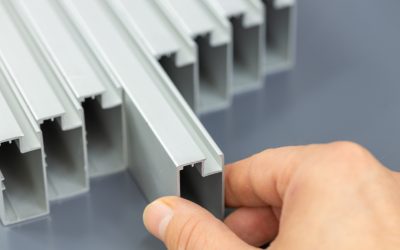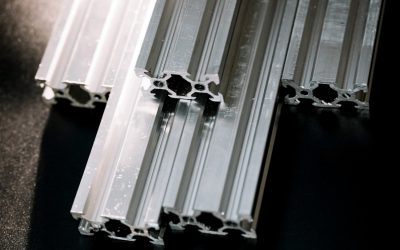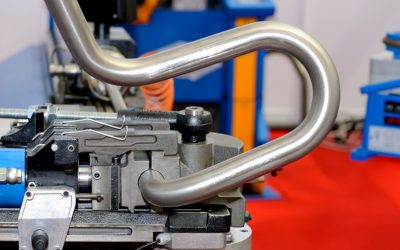The wide variety of aluminum alloys available on the market is enough to make your head spin, particularly if you need to decide which alloy is the best fit for a specific project.
Many design engineers choose aluminum alloys because of their high strength-to-weight ratio, machinability, and corrosion resistance, but these traits vary significantly from one alloy to another. Comparing the strengths and weaknesses of aluminum alloys is a great way to determine which one suits your specific application best.
This article will compare two popular aluminum alloys: 2024 and 6061. Read on to find out which of these two would be better for your application.
Table of Contents
Alloy 2024 in Review
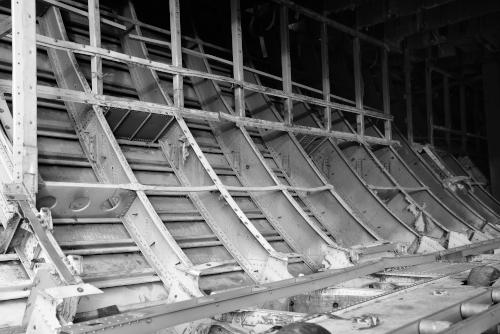
2024 aluminum is often used in aircraft wing and fuselage systems.
A member of the 2000 series, aluminum alloy 2024 has copper as its primary alloying element, but it also has considerable manganese and magnesium. These elements give 2024 aluminum its very high strength, which is the main reason for its popularity. The alloy also offers good machinability and adequate workability.
On the other hand, the high strength provided by the alloying copper comes at a cost. The high concentration of copper degrades the ordinarily excellent corrosion resistance of aluminum. To combat this, some applications of alloy 2024 feature it clad between other aluminum alloys that offer better corrosion resistance.
Alloy 2024 is also difficult to weld and braze, reducing its number of applications. You can find a more in-depth analysis of alloy 2024 in our 2024 Aluminum Overview Article.
Alloy 6061 in Review
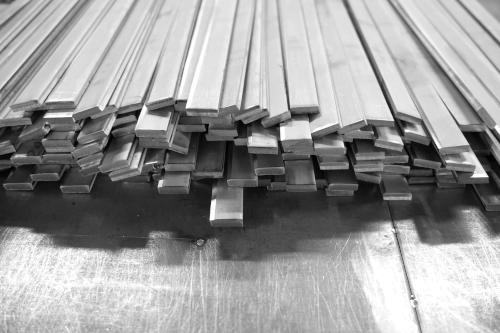
6061 aluminum is often used for building products.
Aluminum alloy 6061 is a member of the 6000 series — a family of alloys with magnesium and silicon as its main alloying elements. 6061 aluminum is one of the most used worldwide, as it’s very versatile and scores well in every category. Because of this, you can find 6061 in a wide variety of applications, from recreational equipment to structural and building products.
Alloy 6061 offers a good tensile strength, which you can significantly improve by applying a suitable temper treatment. It also features good corrosion resistance, weldability, and workability. Many extrusion projects use this alloy as its properties align perfectly with this forming method.
If you pull up aluminum alloy rankings based on their properties, alloy 6061 won’t rank first in any, as there are many specialized aluminum alloys that target specific applications. But 6061 is highly versatile and, compared to those specialized alloys, is readily available and low cost.
You can find a more in-depth analysis of alloy 6061 in our 6061 Aluminum Overview Article.
2024 Aluminum vs. 6061 Aluminum Alloys Comparison
The following table provides a direct comparison between these two aluminum alloys, highlighting their respective strengths and weaknesses:
| Alloy 2024 | Alloy 6061 |
|---|---|
| Alloyed mainly with copper and, to a lesser extent, manganese and magnesium. | Alloyed mainly with silicon and magnesium. |
| Very high tensile strength, ranging from 455 to 483 MPa, depending on the temper treatment. | Medium-to-high tensile strength, ranging between 241 and 310 MPa, depending on the temper treatment. |
| Poor corrosion resistance unless cladded between other alloys. | Good corrosion resistance. |
| Good workability and fair machinability, but poor weldability and brazeability. | Good workability, weldability, brazeability, and machinability. |
| More of a niche alloy, used when strength is of the utmost importance. | Very versatile alloy, used in a wide variety of industries. |
Applications for the 2024 and 6061 Aluminum Alloys
Below are some typical applications for each of these alloys. Looking at common applications may help you decide which of these two alloys could do well for your project.
| Alloy 2024 | Alloy 6061 |
|---|---|
|
|
Should You Choose Aluminum Alloy 2024 or 6061?
The decision to choose either of these excellent aluminum alloys comes down to your specific application.
For many non-specialized applications, alloy 6061 will do just fine. Its great all-around properties, relatively low cost, and good availability make this alloy a firm contender to almost any aluminum project.
If your application needs a high-strength material as the most vital characteristic, you don’t need to weld or braze the product, and you can either do with lower corrosion resistance or apply cladding, you may find that alloy 2024 fits your needs better.
If you’re considering extrusion as the forming method for your project, our aluminum extrusion guide can help you understand how to fabricate high-quality and cost-effective aluminum extrusions.


